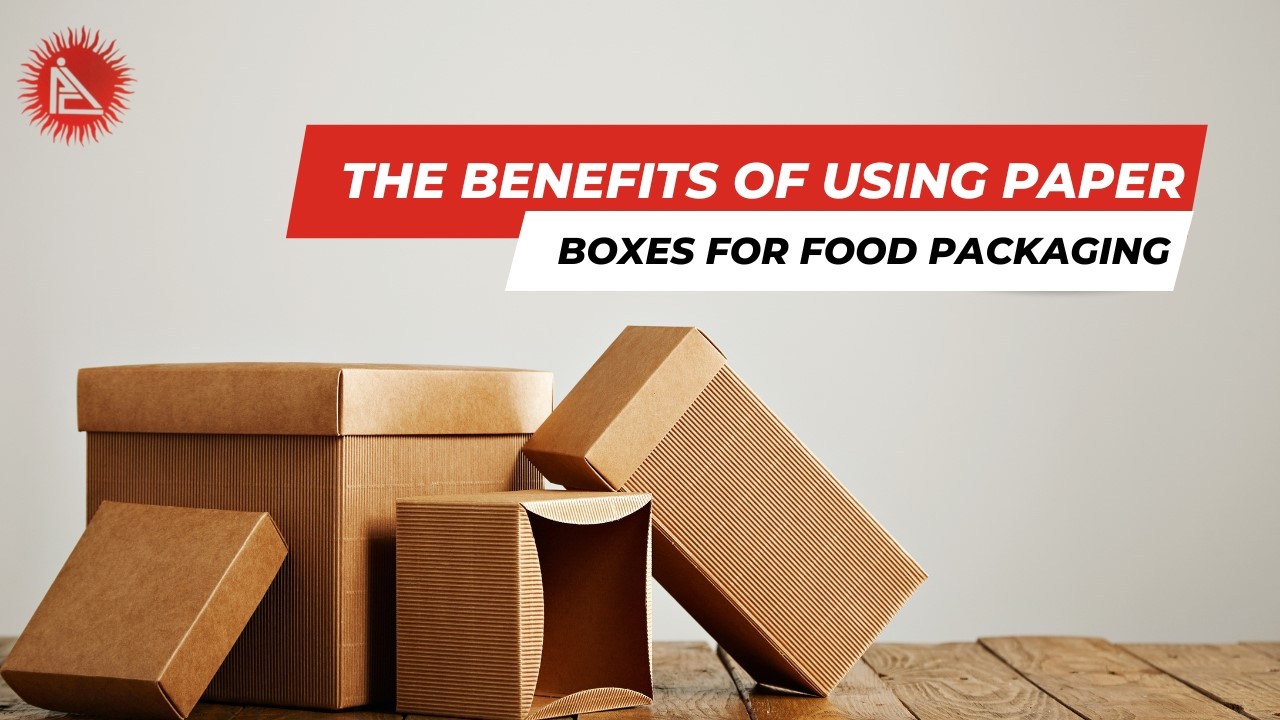The Benefits of Using Paper Boxes for Food Packaging

Updated Jan 6th, 2023
Introduction:
We are currently living in the digital era where everything has shifted online. As the world moved online, everyone became dependent more on online food ordering and other shopping which involves a load of packaging. The Ancient Egyptians learned how to blow glass approximately 3500 BC and used it to make containers for storing food and water. The earliest known instance of flexible packaging was created by Emperor Tsai Lunn of the Imperial Court in the year 105 AD. He created a paste out of bamboo and paper and dried it in the sun.
ABOUT:
Paper boxes for food packing are a must-have among the throwaway items. Food will be packaged and marketed using takeout cartons and other like goods. Fortunately, there are many options available for paper boxes to package food. These boxes are offered in a variety of sizes and hues to meet the requirements of your company. They constructed it out of strong materials including bagasse, cardboard, and paper.
TYPES OF PACKAGING:
There are many different types of boxes that can be used for food packaging, including cardboard boxes, paper boxes, and plastic boxes. Each type of box has its own unique set of benefits and considerations.
- Cardboard boxes are a popular choice for food packaging due to their strength and durability. They are made from layers of corrugated paper and can be easily customized in terms of size, shape, and design. Cardboard boxes are also easy to print on and can be recycled after use.
- Paper boxes are another option for food packaging. They are made from a single layer of paper and are generally lighter and more eco-friendly than cardboard boxes. Paper boxes are also customizable and can be printed on, but they may not be as strong and durable as cardboard boxes.
- Plastic boxes are a third option for food packaging. They are made from synthetic polymers and offer good protection for food products. Plastic boxes are also lightweight, waterproof, and easy to clean, but they are not as environmentally-friendly as paper or cardboard boxes.
Ultimately, the best type of box for food packaging will depend on the specific needs and requirements of the food product being packaged. Factors to consider include the weight and size of the product, the level of protection needed, and the desired level of sustainability.
BENEFITS OF PAPER
Paper boxes are a popular choice for food packaging due to their many benefits. Here are some of the main advantages of using paper boxes for food packaging:
- Eco-friendliness: Paper is a renewable and biodegradable material, making it a more environmentally-friendly option compared to plastic or other synthetic materials. This is especially important as consumers are increasingly seeking sustainable options for their food packaging.
- Customizability: Paper boxes can be easily customized in terms of size, shape, and design to fit the specific needs of the food product being packaged. This allows for more flexibility and creativity in the packaging process.
- Printing capabilities: Paper has good printing capabilities, allowing for high-quality printing of branding and other information on the packaging. This is important for building brand awareness and promoting the food product.
- Protection: Paper boxes offer good protection for food products, keeping them safe from damage during transportation and storage. They can also be lined with additional materials such as wax or foil for additional protection.
- Versatility: Paper boxes are suitable for a wide range of food products, including baked goods, snacks, and even hot food items. They can also be used for both retail and foodservice packaging.
The fact that all of it is biodegradable is one advantage of compostable food packaging. The
same cannot be stated, however, for the composability of all biodegradable materials. When a
product is marked as biodegradable, it signifies that it will eventually break down into
organic matter with the aid of bacteria, fungus, and algae. The term "compostable''
describes a human-intervened process that recycles organic waste for reuse more quickly than
scale-up biodegradation. Even plastics, which are widely used, are biodegradable; the
problem is how long it takes for them to do so, which causes pollution that might be avoided
and overcrowded landfills. While most biodegradable materials take between three and six
months to completely decompose, some take decades. The problem with most biodegradable goods
is that they only reduce environmental effects when properly disposed of in locations that
control temperature, moisture, and air quality.
Compostable items may be broken down in a composting plant in a few months when managed
properly. Paper goods that can be composted can biodegrade spontaneously, although it takes
longer than composting at a facility. Because they may be reused, are more adaptable, and
have a lower environmental effect, compostable items are more environmentally friendly and
sustainable. Composting creates a healthy, nutrient-rich soil that permits organic carbon to
return to the ground and lowers greenhouse gas emissions. Composting can be done at home,
but it is advised that it be done at a commercial facility.
As a result, Pack Care India paper boxes are a flexible and environmentally responsible
option for food packaging that has several advantages, such as customization, strong
printing capabilities, security, and adaptability.